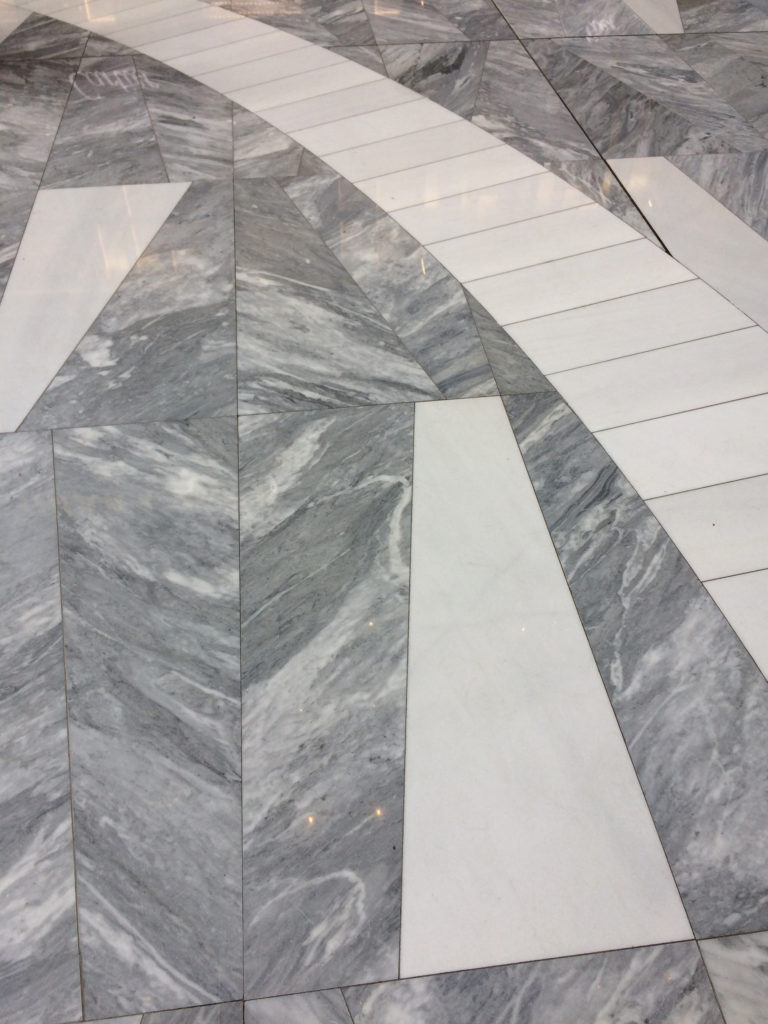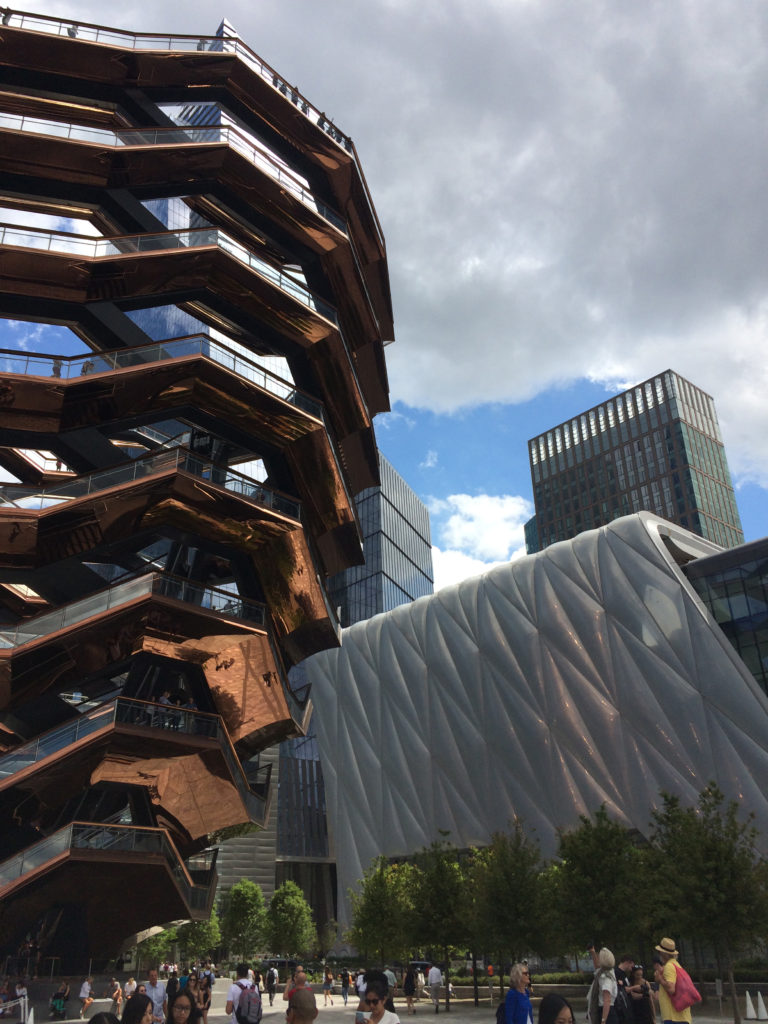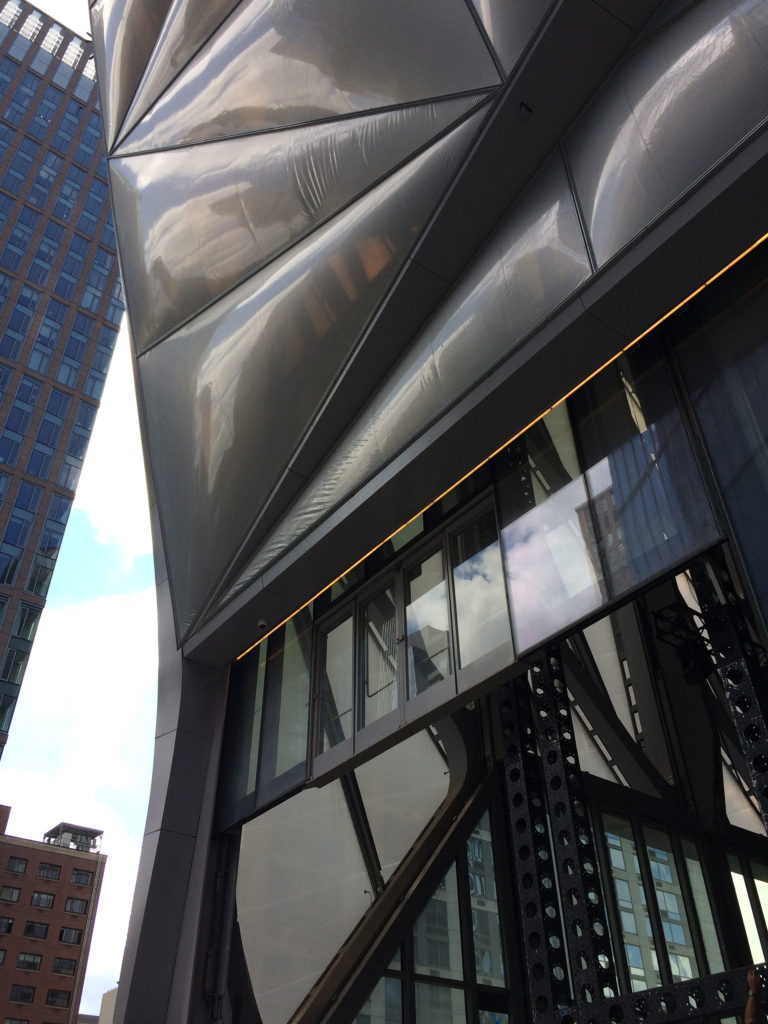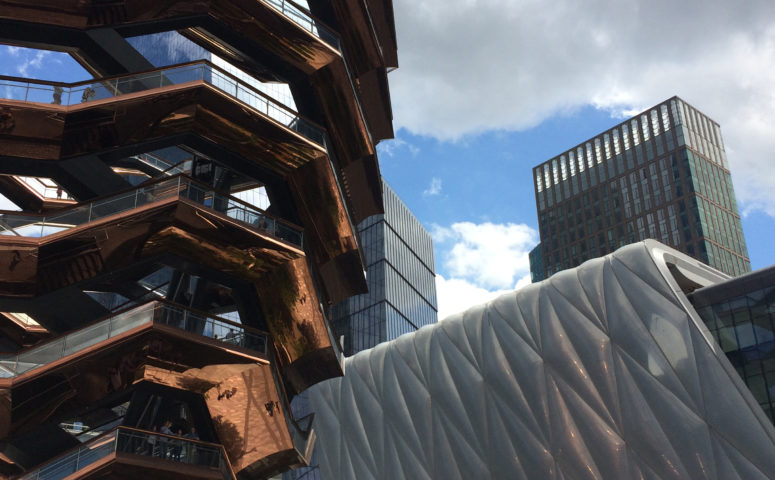Hudson Yards is gray, really gray, even on a sunny day. The buildings are gray. The souvenir baseball caps are gray. Matte gray, glossy gray, in-between gray, all gray. Some of the shiny curtain walls aren’t actually gray. And at the center, Thomas Heatherwick’s coppery sculpture, Vessel, sits like a yolk. But it’s the cumulative emotional effect of Hudson Yards that’s gray. Or perhaps the culture that created it. Hudson Yards is deadening.

Heatherwick, the brilliant British designer, has captured the essence of the place. Big, polished, and empty. Whether Vessel is art or decoration should keep college kids typing for years. I like a lot of Heatherwick’s work, like the double-decker London bus, the vents at Paternoster Square, and the 2010 UK Pavilion in Shanghai. We could revive the age-old discussion of whether architecture is art. I tend to say, “Very rarely.”
Heatherwick is a designer, not an artist. His job is to make all kinds of constructed matter look good. The Vessel is not intentional art; it might turn into accidental art. Right now it symbolizes late capitalism, much as Masayuki Nagare’s sculpture (dubbed “Banker’s Heart” by locals) did in the plaza of the San Francisco’s Bank of America headquarters.

Richard Serra’s Tilted Arc in Manhattan was removed in 1989 by the U.S. Government because it was so disagreeable. That was art! His subtle yet powerful sculpture illustrated what was happening in American society in the latter half of the 20th century. It remains timeless. In a strange way, Tilted Arc’s removal guaranteed a kind of eternity. Heatherwick’s Vessel is a great big vase that won’t hold flowers but instead people wilting in the summer sun. I don’t think it will last. For one thing, the shiny copper will get covered in bird shit.
The Shed arts center might redeem the project if the programming is flexible and inexpensive. When I asked one longtime New Yorker about the new Shed, her response to the exterior was, “I thought that thing was some kind of construction material.” I think it looks a bit like a Moncler puffer jacket. But the imperfect wrinkles give it a hint of the unchoreographed. The huge wheels that the shed moves on look like something left over from a Toy Story film. But inside, it’s inspiring the way a hangar for a blimp might have been.

I could talk about the other various buildings, but none of them stood out. Like the idea of a Parisian or San Francisco polite-to-the-neighbors cityscape, but in this case raised up into the sky and made of reflective glass and steel. A vertical office park? So polite it’s just dull. But what is downright ugly is the enormous central plaza that most folks will avoid in the middle of summer. Currently people move toward the edge seeking a view of the Hudson River. The view is mostly of trains, which are wonderful to watch, and beyond, the distant Hudson River. These rail yards will eventually be covered and the new sterile gray towers will provide welcome shade.
I leave the worst for last. The Shops and Restaurants at Hudson Yards. It’s big, and the materials are expensive. But it’s still a suburban mall in the middle of New York. It’s homogenized New York. And to assure no mishaps, there’s a small army of young men and women in suits and earphones looking like undertakers at Trump’s funeral. Although there are the usual high-end jewelers on the first floor, they look like empty stages with well-dressed servants awaiting their masters. If there is bustle, it’s in the restaurants and the more middle-class stores further up. Why Neiman Marcus thought a large department store would fly here is beyond me. Maybe it’s for their suburban Texas demographic when they venture to the “diverse” Big Apple.
All of these criticisms lead me back to the question, “Is there something beyond profit?” Why did Rockefeller Center endure so well? Was it the motivation of the Rockefellers, the commitment to something bigger than immediate returns, the cost of labor in a depression? Did they possess some kind of idea about civic responsibility? Or was it that some capitalists in the middle of the 20th century actually believed that a well-designed urban complex would produce large returns over a long period? Hudson Yards may be a perfect symbol for late, very late, capitalism. It’s a backdrop for visitors looking for a heart, or at least some color.
Further reading: https://www.architectmagazine.com/design/hudson-yards-broke-my-heart_o
Photo credits: Kenneth Caldwell
